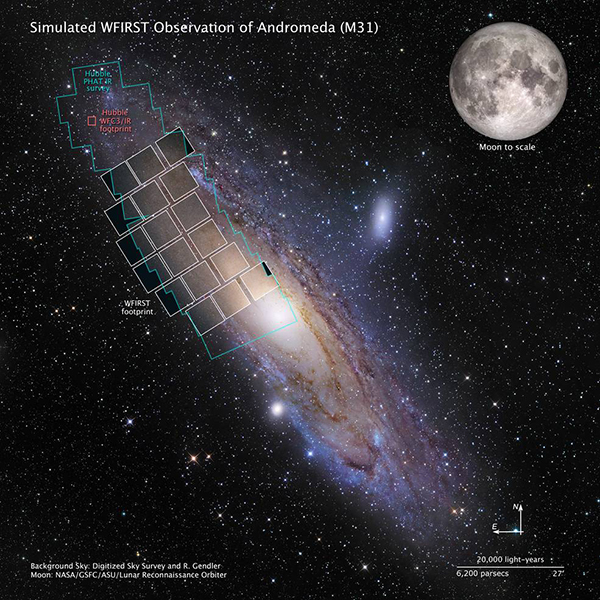NASA’s WFIRST Project Passes Critical Milestone, Designed to Study Other Universes and Exoplanets
By NASA // March 3, 2020
100 times larger viewing area of NASA’s Hubble Space Telescope

(NASA) – NASA’s Wide Field Infrared Survey Telescope (WFIRST) project has passed a critical programmatic and technical milestone, giving the mission the official green light to begin hardware development and testing.
The WFIRST space telescope will have a viewing area 100 times larger than that of NASA’s Hubble Space Telescope, which will enable it to detect faint infrared signals from across the cosmos while also generating enormous panoramas of the universe, revealing secrets of dark energy, discovering planets outside our solar system (exoplanets), and addressing a host of other astrophysics and planetary science topics.
WFIRST’s design already is at an advanced stage, using components with mature technologies. These include heritage hardware –primarily Hubble-quality telescope assets transferred to NASA from another federal agency — and lessons learned from NASA’s James Webb Space Telescope – the agency’s flagship infrared observatory, targeted for launch next year.
With the passage of this latest key milestone, the team will begin finalizing the WFIRST mission design by building engineering test units and models to ensure the design will hold up under the extreme conditions during launch and while in space.
WFIRST has an expected development cost of $3.2 billion. Including the cost of five years of operations and science, and a ride-along technology demonstration instrument capable of imaging planets around other stars, brings the maximum cost of WFIRST to $3.934 billion.
The FY2020 Consolidated Appropriations Act funds the WFIRST program through September 2020.
The FY2021 budget request proposes to terminate funding for the WFIRST mission and focus on the completion of the James Webb Space Telescope, now planned for launch in March 2021. The Administration is not ready to proceed with another multi-billion-dollar telescope until Webb has been successfully launched and deployed.
WFIRST is managed at Goddard, with participation by the Jet Propulsion Laboratory (JPL) in Pasadena, California, the Space Telescope Science Institute in Baltimore, the Infrared Processing and Analysis Center, also in Pasadena, and a science team comprised of members from U.S. research institutions across the country.
CLICK HERE FOR BREVARD COUNTY NEWS














